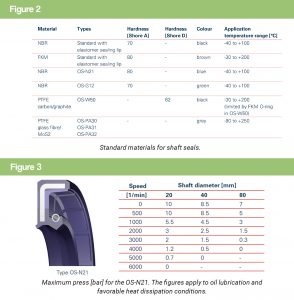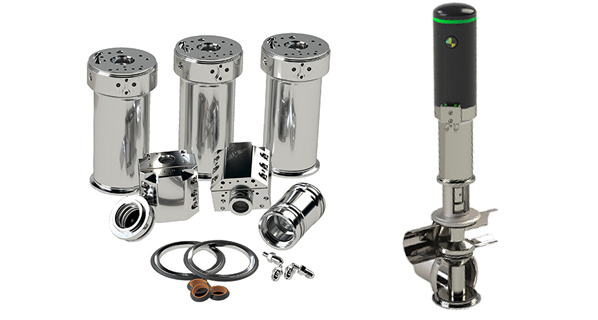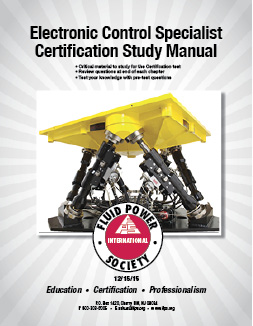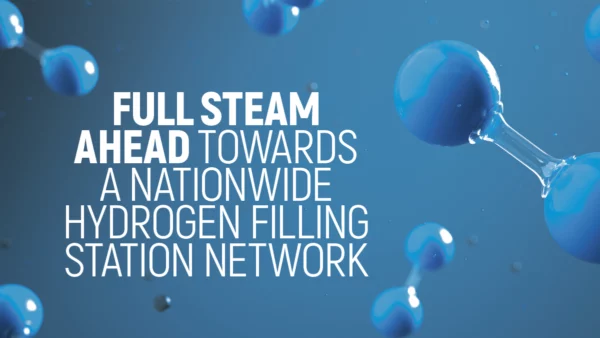Vote Of Confidence: Choosing the Right Seal for a Hydraulic Pump
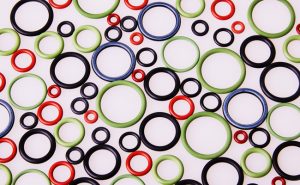
By Corey Holloway, Sales Manager North America, Anyseals, Inc.
In recent months, seal suppliers for distribution and maintenance and repair markets have reported a surge in demand for high-pressure oil seals. This trend is not a coincidence, as these devices are some of the most widely used sealing components in circulation today. The industrial oil-seal market is divided into three primary types: axial, radial, and mechanical. Oil seals, also called shaft seals, are radial lip-type seals specifically designed for retaining lubricants in equipment with rotating, reciprocating, or oscillating shafts. They are found in various applications, from gear engines and construction equipment to rolling mills and wind power generators. Oil seals are in critically short supply as the industry emerges from the manufacturing shutdowns and slowdowns during the pandemic.
Although oil seals play an essential role in keeping equipment running for the high-pressure hydraulic pump market, finding a reliable and available supply source can be tricky. Here are some things to consider when choosing the proper seal for a hydraulic pump application.
Seal function
Oil seals preserve a lubricating medium within a defined space. They also safeguard the sealed space from dirt, dust, and other potentially damaging contaminants. For example, in a high-pressure hydraulic pump operating environment, the entire sealing system, comprised of the shaft seal, shaft housing, fluid medium, and environment, determines the seal function and level of durability required. Therefore, select an easy-to-replace-and-install product that offers leakage-free sealing in various working environments. This choice should offer low-friction sealing resulting in minimal power loss and heat development. Oil seals are manufactured according to strict quality standards and are under constant control for compliance with common international norms. This works to the advantage of the user, who is assured a certain quality and fit no matter the product’s manufacturer. For the sake of continuity, the typical designation of an oil seal includes the type, shaft diameter, outer diameter, height, and material (see figure 1).
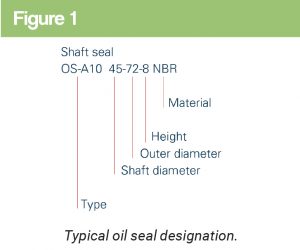
Materials
A wide range of standard materials and an extended range of special materials are designed to handle most traditional oil-seal applications. Among the standard seal types, NBR is the most widely used material. NBR is characterized by good mechanical properties, high abrasion resistance, high tensile strength, low gas permeability, low compression set, and high resistance to petroleum-based oils and fuels, silicone greases, hydraulic fluids, water, and alcohols. NBR is a copolymer of butadiene and acrylonitrile (ACN). Depending on the application, the content of acrylonitrile can vary between 18% and 50%. Low ACN content improves cold flexibility at the expense of the resistance to oil and fuel. High ACN content enhances the resistance to oil and fuel while reducing the cold flexibility and increasing the compression set.
When it comes to oil-seal materials, the following are not recommended for NBR:
• Fuels with high aromatic content, such as jet fuel, diesel fuel, high-octane gasoline, and gasoline.
• Aromatic hydrocarbons such as methylbenzene, naphthalene, phenanthrene, trinitrotoluene, and o-dihydroxy benzene.
• Chlorinated hydrocarbons, such as the pesticide DDT and vinyl chloride, which are manufactured in large quantities to produce polyvinyl chloride and manufactured to produce pesticides, solvents, precursors to various industrial processes, coatings, polymers, and synthetic rubber products.
• Nonpolar (lipophilic) solvents that dissolve nonpolar substances such as oils, fats, and greases. Examples include carbon tetrachloride, benzene, diethyl ether, hexane, and methylene chloride.
• HFD fluids, which are water-free, synthetically produced, and fire resistant.
• Brake fluid DOT 3 (glycol type); ethylene propylene diene monomer (EPDM) rubber is the preferred material for this application.
• Ozone; EPDM, FKM, and PTFE are recommended
Fluorinated rubber (FKM) is another common material characterized by resistance to ozone, weathering, and aging. FKM materials meet the needs of many applications requiring high thermal and chemical resistance. FKM also offers low gas permeability, making it a suitable material for vacuum applications. FKM is not resistant to glycol-based brake fluids, polar solvents (e.g., acetone), superheated steam, hot water, amines, alkalis, and low-molecular organic acids (e.g., acetic acid).
Polytetrafluoroethylene (PTFE) is a fluorinated thermoplastic material with many positive characteristics for sealing material. This includes high thermal and almost infinite chemical resistance. Compared to NBR and FKM materials, PTFE has the lowest friction coefficient, making it most suitable for dynamic applications. Oil seals are composed of PTFE with fillers. PTFE does not, however, have any elastic properties and is typically energized with other complimentary materials such as elastomers or spring steels.
The most important materials for seals in this group are:
• NBR (acrylic nitrile butadiene). It has good mechanical properties, including abrasion resistance, can be adapted to different tasks by varying the acrylic-nitrile content, and is suitable for temperatures ranging from -20°C to 100°C (-4°F to 212°F).
• FKM has high resistance to mineral oil and HFD fluids even at high temperatures up to
200°C (392°F).
Standard and special seal types
Operating parameters will generally determine if an application requires a standard or special sealing solution. As a rule of thumb, all standard seals are designed for nonpressure applications. When excess pressure develops within the unit to be sealed during operation, check the air vents to see if they are clean, open them if necessary, or use a special seal designed for high-pressure applications. However, pressures up to 0.05 MPa (7 psi) can be controlled by standard types.
If the application dictates higher than normal pressures, special types and profiles that use advanced materials or profiles are available. For example, the anyseals type OS-N21 is composed of a sealing lip that is shorter and stiffer than the standard type of seal, preventing increased contact pressure. The OS-N21 anyseals type was designed for pressures up to 1.0 MPa (145 psi). The reinforcing ring is pulled down lower on the shaft diameter to better support the sealing lip. The lower flexibility of the sealing lip requires tighter tolerances with regards to the dynamic runout and offset. Application limits depend on the rotational speed and diameter of the shaft (see figure 3).
In conclusion, be diligent when searching for the greatest possible availability of quality standards and special seal types. For quality assurance, seek a supplier that provides certified sealing products that can be identified and traced by lot and material number.

